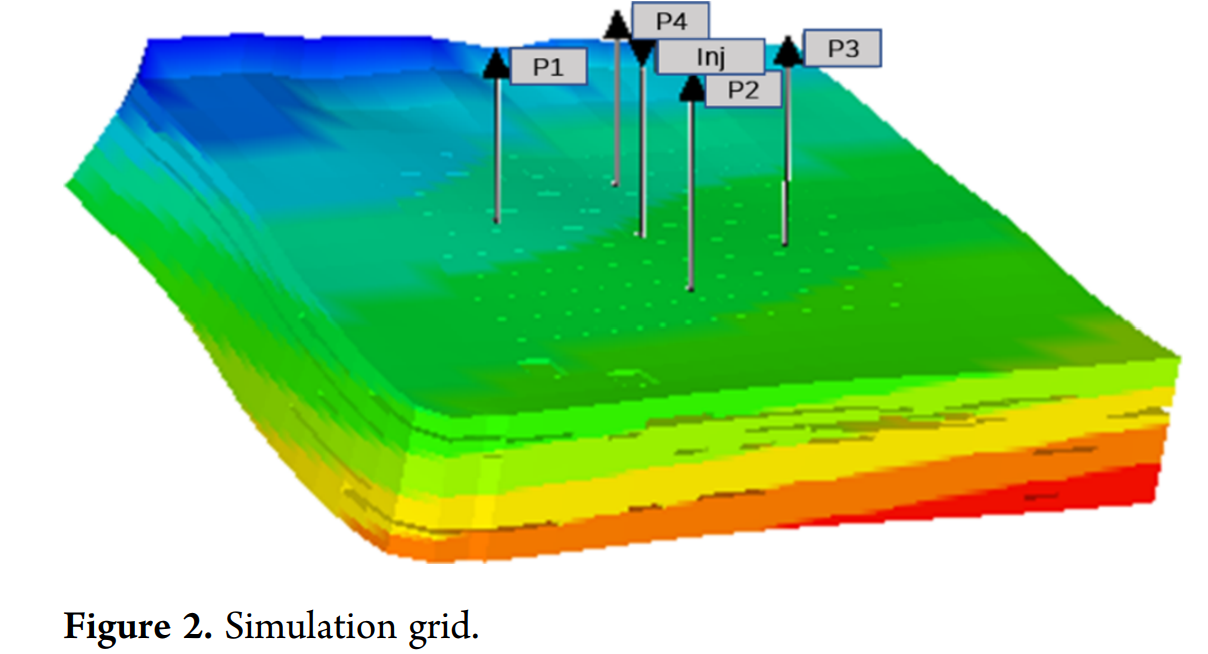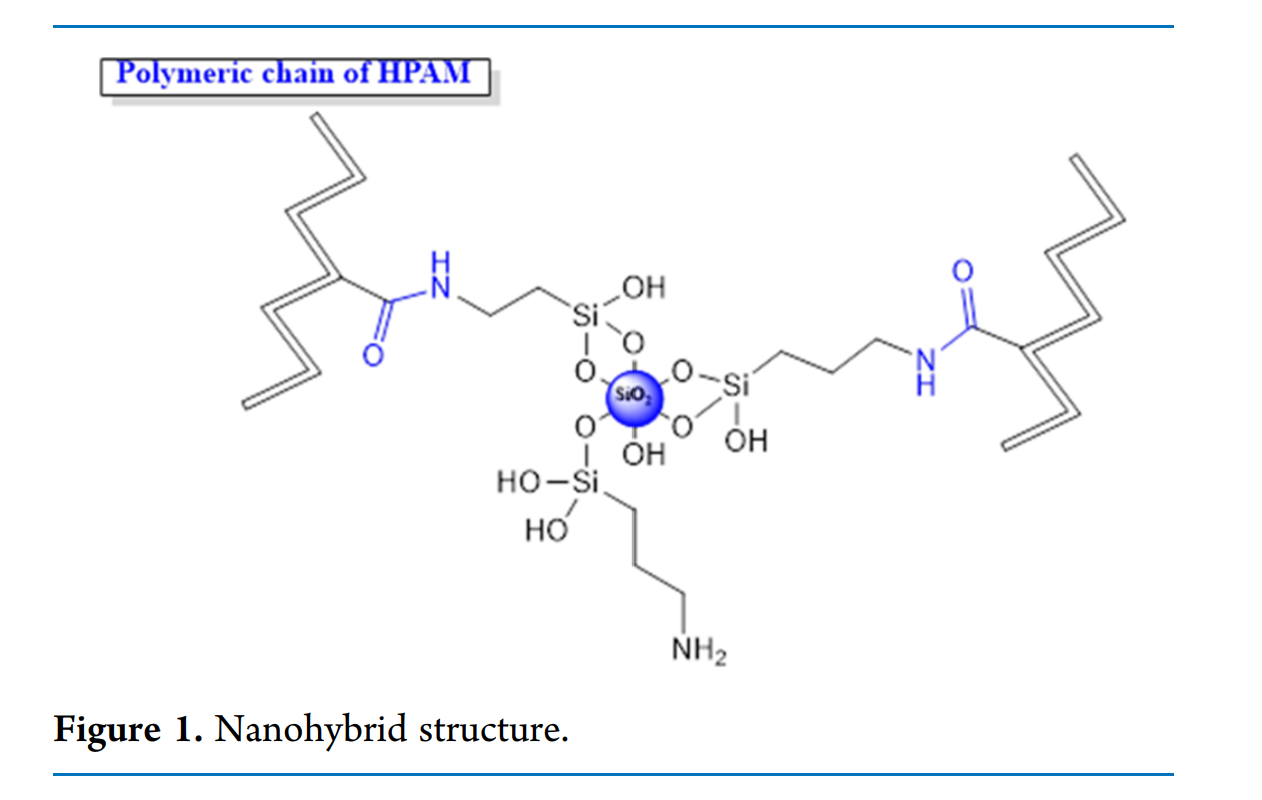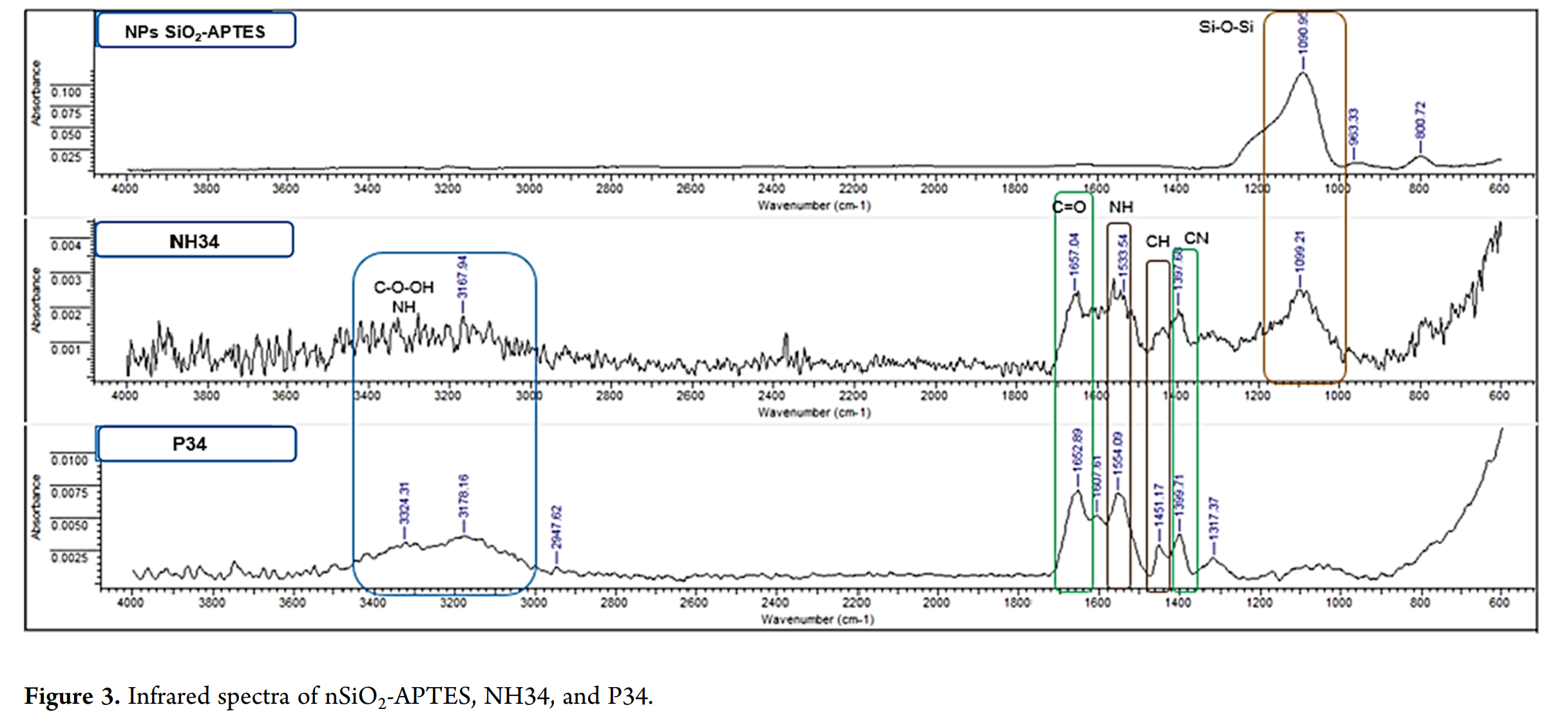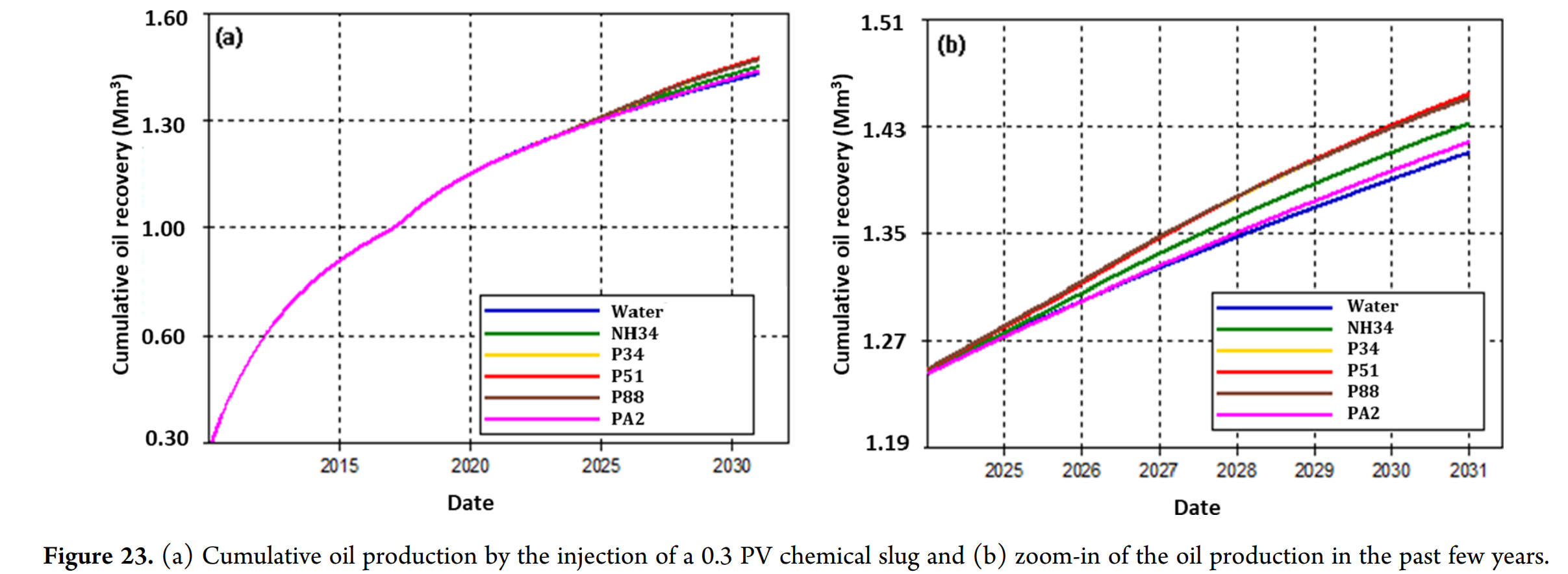Effect of a SILICA/HPAM Nanohybrid on Heavy Oil Recovery and Treatment: Experimental and Simulation Study
在提高石油采收率方面,添加纳米颗粒被认为是一种替代方法,用以对抗用于聚合物溶液的降解。在此背景下,合成并评估了一种纳米混合物(NH34),该混合物由部分水解聚丙烯酰胺(MW约12 MDa)和用2% 3-氨基丙基三乙氧基硅烷改性的纳米二氧化硅(nSiO2-APTES)组成。使用动态光散射、傅里叶变换红外光谱和热重分析对NH34进行了表征。流体-流体测试评估了其增稠能力、机械稳定性、滤湿性和乳化行为。岩石-流体测试用于确定纳米混合物在多孔介质中的吸附、不可接触孔隙体积(IPV)和阻力因子(RF)及残余阻力因子(RRF)。
这些测试是在哥伦比亚油田的条件下进行的。将NH34的结果与四种(4)商业聚合物(P34、P88、P51和PA2)进行了比较。观察到NH34的增稠能力与四种商业聚合物相似,但其对机械和化学降解的抵抗力更强。乳化行为的评估表明,纳米混合物既没有改变脱水过程,也没有改变原油粘度,这有利于在井口开采原油。然而,必须调整水处理,因为油和油脂含量以及浊度随着NH34残留浓度的增加而增加。
通过数值模拟(与水驱相比)获得的提高石油采收率为P51(5.5%)> P34(4.9%)> P88(4.8%)> NH34(2.6%)> PA2(0.9%)。由于残余吸附和IPV的较低值,聚合物P51、P34和P88的回收因子优于NH34和PA2。很少有研究报告聚合物纳米混合物的乳化和流动行为。因此,需要进一步的研究来增强我们对与聚合物纳米混合物相关的基本提高采收率机制的理解。
CMG软件应用情况:
数值模拟是使用商业软件(CMG STARS)进行的。定义了一个反5点注入井网,以评估纳米混合物和四种商业聚合物(P34、P88、P51和PA2)注入的影响。该模式覆盖了20英亩的区域,孔隙体积为1.3 Mm3(8.05 Mbbl),原始油藏油量(OOIP)体积为0.8 Mm3(5.27 Mbbl)。为了预测纳米混合物注入的行为,模拟模型在模拟中经历了一个初始阶段的水注入作为二次采油方法。这建立了一个基准,以评估注入化学品的性能。模拟中考虑了不可逆的聚合物吸附。





Abstract
The addition of nanoparticles has been presented as an alternative approach to counteract the degradation of polymeric solutions for enhanced oil recovery. In this context, a nanohybrid (NH34) of partially hydrolyzed polyacrylamide (MW ∼12 MDa) and nanosilica modified with 2% 3-aminopropyltriethoxysilane (nSiO2-APTES) was synthesized and evaluated. NH34 was characterized by using dynamic light scattering, Fourier-transform infrared spectroscopy, and thermogravimetric analysis. Fluid-fluid tests assessed its viscosifying power, mechanical stability, filterability, and emulsion behavior. Rock-fluid tests were carried out to determine the nanohybrid’s adsorption in porous media, the inaccessible pore volume (IPV), and the resistance (RF) and residual resistance factors (RRF). These tests were conducted under the conditions of a Colombian field. NH34 results were compared with four (4) commercial polymers (P34, P88, P51, and PA2). The viscosifying power of NH34 was observed to be similar to that of the four commercial polymers at a lower concentration, but it exhibits more resistance to mechanical and chemical degradation. The evaluation of the emulsion behavior showed that the nanohybrid neither changed the dehydration process nor altered the crude oil viscosity, favoring its extraction at the wellhead. However, the water clarification treatment must be adjusted because the oil and grease contents and turbidity increase with the residual concentration of NH34. Incremental oil recovery factors obtained by numerical simulation (compared to waterflooding) were P51 (5.5%) > P34 (4.9%) > P88 (4.8%) > NH34 (2.6%) > PA2 (0.9%). The polymers P51, P34, and P88 had a better recovery factor than NH34 and PA2 due to their lower values of residual adsorption and IPV. Few studies have been reported on polymer nanohybrids’ emulsion and flow behavior. Therefore, further research is needed to enhance our understanding of the fundamental enhanced oil recovery mechanisms associated with polymer nanohybrids.
作者单位:
哥伦比亚石油研究院
